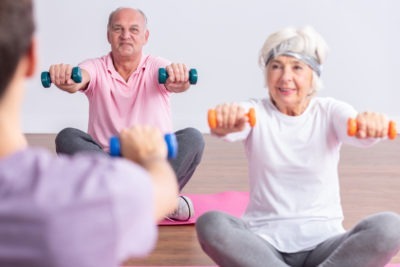
Arthritis is a common ailment that many suffer with as they age and it can also be one of the most unpleasant. After years of using your joints every day, it is natural to feel aches and pains throughout the day. While there is no cure for arthritis, there are some things you can do to help ease the symptoms. Discuss these options with your doctor to decide on a tailored wellness or personal care plan that fits best with your health needs.
1. Hot and Cold Treatments
Never underestimate the benefits of a little heat or some ice to soothe your muscles. A hot shower or a heating pad can help relax muscles and soothe pain. This is because heat stimulates blood flow and improves circulation, helps increases range of motion, and reduces stiffness in painful joints [1]. On the other hand, cold treatments can also be beneficial by numbing the pain and minimizing inflammation [1]. For the benefits of both these treatments, consider using pain relief cream, which topically applies warm and cool sensations to the skin. Always be mindful of how long you use hot and cold remedies to avoid doing any further damage.
2. Exercise/Physical Therapy
Sometimes movement can be the best solution to dealing with stiff and painful joints. Some helpful exercises include strength training, yoga, and walking. These are all low impact forms of movement that will help get your blood flowing and increase mobility. Another popular option is swimming, which is great for gentle exercise that can combat stiffness. For more safe exercising options that can ease joint pain, talk to your doctor about a physical therapy regimen that meets your specific needs.
3. Pain meds
While there is no cure for arthritis, there are medications available that can help with pain. Anti-inflammatory medications can be used for a variety of symptoms of arthritis, including discomfort and stiffness. Medications such as Aspirin, Ibuprofen, and Naproxen sodium are effective in treating pain caused by slow, prolonged tissue damage, such as the pain from an arthritic joint [2]. Always follow directions regarding dosage and talk to your doctor about any new medications you are considering taking.
4. Rest
Take it easy! If possible, try to give your joints a much-needed rest. Taking a day or two to recuperate pairs great with any of our previously listed tips. Try elevating your legs to relieve some pressure. For hands, wrists, and arms, using a splint to limit movement may help as well. When you are feeling up to it, you can get back into your workout routine, but remember not to overdo it. Know your limitations and modify your activity when your body tells you it needs rest.
Sources:
